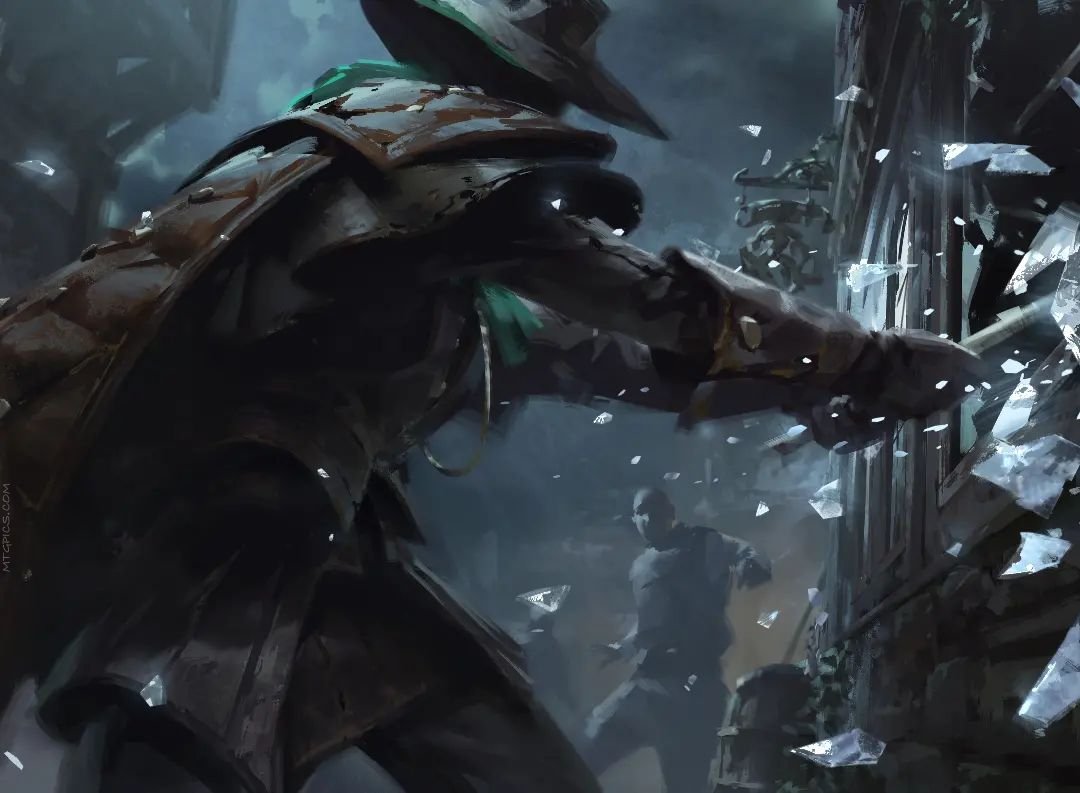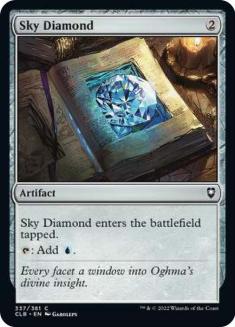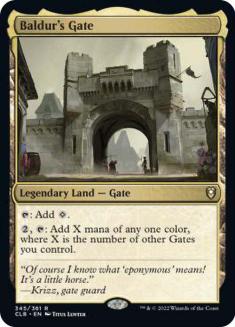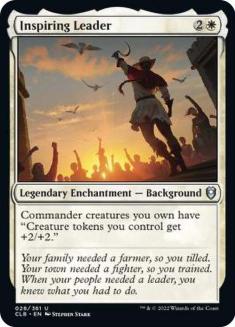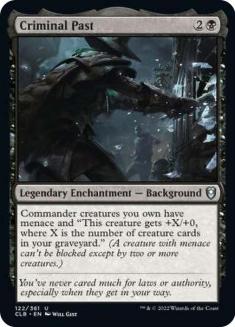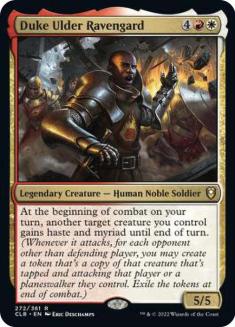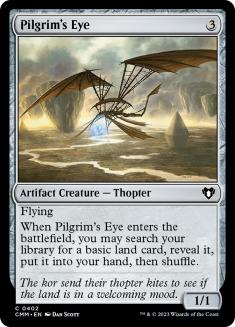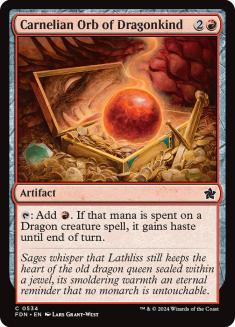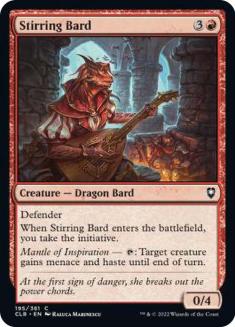I just flew back from CommandFest Richmond, and boy, are my Arms of Hadar tired! I also found Arms of Hadar to be equally as awful as that joke. Over my five days at Prerelease Weekend, I had a chance to draft Commander Legends: Battle for Baldur’s Gate (CLB) a whopping five times and spend another hour, at minimum, staring lustfully at the prize wall. I also counted my tickets an annoying number of times.
With a respectable 2-3 record (one game I had to punt out of to make an event I should not have signed up for), I wanted to follow up on my first impressions pieces from last week (read Part 1 and Part 2 if you missed them) and then share a few of the things I saw work well over the weekend.
This also isn’t a competitive/cEDH CLB primer, but rather how to do fun things without getting punished for not winding up with a plausible deck at the end of your draft.
25 Lands Is Your Magic Number
I legitimately cannot remember a time in the last decade I sleeved up a 60 card deck in the last decade. Trying to figure out a correct land count left me more confused than trying to make sense of what’s going on with Elon Musk and Twitter. In the end, I was satisfied with running 24 to 25 in each game. On the low end, I was lucky enough to score a mana rock or two (usually assorted Diamonds) or was playing a deck with cards that gave me initiative that guaranteed me an extra land once they hit.
In one pod, a guy recommended to the table “20 to 24,” which is objectively bad. Remember that people are forced to play more removal than synergy in Limited, so commander tax really adds up. I also found enchantment removal particularly busted (and bountiful), so my Backgrounds became almost cost-prohibitive eventually. You need lands, so don’t skimp, and don’t be afraid to take a few Gates here and there to ensure you are getting the mana you need, even in two-color decks.
Backgrounds Were What We Thought They Were
…and by that, I mean busted. I’m not arguing with the Burger King app when it upgrades my soda to a large, even if it means I’m doubling down on an already bad decision. Here, it’s more like Five Guys tossing an extra patty onto my burger, as the diminished power of uncommon legends is worth getting a free card. The best part is that, excluding Faceless One, 92.3% of our Backgrounds have a mana value of three or less, which makes them an ideal early play.
I found that your two-drops that don’t produce mana tend to become irrelevant faster than my pop culture references, but you want to be doing something on the battlefield early. Since they’re irrelevant until your Commander joins the fray, Backgrounds also don’t present as an immediate threat, which can buy you some time and early life.
You still prefer these when they provide a passive effect, like Dungeon Delver or Inspiring Leader, rather than something that only affects your commander, like Criminal Past or Sword Coast Sailor, but that’s not a hard and fast rule. Wilson, Refined Grizzly and his litany of keywords can go to town with the right bonuses, even if Bears going to town generally leads to perilous endings for them.
You Will Have Enough Cards
In a draft that felt incredibly shady, I was passed my fifth and sixth selections of Pack 3 before I finally found my commander. I was also silently chanting, “Not Faceless One. Not Faceless One.” to myself at that point, but the larger point is that I wouldn’t stress too much about being in the “right” seat in terms of what you’re being passed. When running 25 lands, you can afford to only grab twelve playables per twenty-card pack, which isn’t an incredibly hard bar to hurdle.
This is also why I remain down on our tricolor legends. If I were hurting to get to 60, having access to a third color would mean the difference between a win and a trainwreck. Instead, it means I’m denying myself a Background, making my manabase more complicated, and creating the perception that I’m a larger threat than I am before the game even begins. Considering the shard or wedge commanders look particularly suited for Constructed play, I don’t think it’s worth the risk, even if I didn’t listen to that advice myself.
Big Spendy Commanders Aren’t That Bad
This could have been a function of playing with random strangers in a pod, but I believe that this may actually be the format for playing big, silly things, especially if you can hold on to a little protection for them when they hit. In my original reviews, I think I leaned too much on traditional Draft heuristics and paid a dear price for it early on. Everyone is nervous about the person who builds a strong early battlefield and does so efficiently. You’re like James Corden, in that you’re all of a sudden everywhere and no one knows why or trusts you implicitly.
In CLB Limited, it feels like people tend to get engrossed in what’s happening now as opposed to what’s going to happen. Again, this is a result of decks primarily featuring a lot of interaction and our ingrained ethos of needing to spend mana for efficiency.
I watched a smart player let us duke it out while leaving Duke Ulder Ravengard on the sidelines for several turns after he could have entered the battlefield, simply because everyone was obsessed with each other and the status quo. We were the toddlers chasing the soccer ball.
Threat Assessment Level Midnight
Just like your worst Thanksgiving dinners, politics are all over the place in CLB Draft. Sandbagging won too many games for my taste this weekend, for all the reasons I mentioned in the previous section, but also because we had no clue how anyone else played. It makes sense to take out the Big Bad and finish everyone else off when you can breathe easily. It looks good to trade haymakers and come out alive. But you need to have a plan to finish off the remaining players.
Here, since decks tend to lack a focused gameplan and instead rely on good cards winning the day, you need to cut deals and be strategic. Make sure you’re explaining the sacrifices you’re making and the resources you’re expending to deal with the most dangerous threat so that you’re not immediately dispatched when it’s convenient.
Or, just don’t play anything and look helpless until you can dump your hand and steal a win.
Evasion Is Critical
Pilgrim’s Eye might have been one of my most underrated cards of the weekend. The 1/1 flyer usually seems an aggressively fine, vanilla play in Commander. Like the Sad Robot, but instead Kinda Bad Robot. Here, it serves two purposes. First, you can cheat your land count down to 24 while finding exactly what you need in a pinch. Second, Eye steals initiative like it was a National Treasure and it did a Face/Off with Nicolas Cage. If it fetched you two lands to start, you’d maindeck it in Constructed, and that’s exactly what you get when you add in the Secret Entrance portion of Undercity.
Of course, not every deck will be playing cards that take the initiative, but it’s rare you’ll end up in a pod that eschews it entirely. When you do venture in, I consider the best path to be Forge into Arena into Archives. Prioritizing simple evasion in the form of Scouting Hawk, Pseudodragon Familiar, Gray Harbor Merfolk, Young Red Dragon, Young Blue Dragon, Lurking Green Dragon, and Nefarious Imp is ideal and felt like an intentional choice by the design team. Lurking Green Dragon is obviously suspect, but sometimes the person who steals initiative does so by tapping down their flying attacker, leaving them vulnerable.
Quick Hits
Turtling is just fine if you think your pod won’t take out a player with their shields down. Explosive turns are easy to pull off with myriad or a powerful enough commander.
Haste is underrated, especially with initiative running around. Being able to make things happen out of the blue can steal a dungeon walk, which makes me love Carnelian Orb of Dragonkind and Stirring Bard even more. The latter helps you retake initiative while introducing it, which is underrated.
Know when your deck cares more about synergy than power. Azorius Flicker and Dimir Dungeons stand out as archetypes that would prefer a solid creature that fit their themes over a slightly better removal or interaction spell.
I don’t think Adventure comes together as a mechanic here. There are plenty of cards that are fine on rate, but the payoffs for adventuring are few and far between. Telegraphing everything you’re about to do leads to negative consequences, though. People may be goldfish, but that’s an even better reason to not toss a ton of exiled threats in front of them.
Closing the Gate
I have to say, after a rough go of it with Streets of New Capenna Draft, I had a blast this weekend getting back to dungeoneering, rolling D20’s, and going on Adventures. CLB feels like the greatest hits in terms of mechanics from recent sets, only with smart design guiding it. If you haven’t had a chance to draft it yet, don’t waste any more time. People are going to be obsessing over Double Masters any day now.

